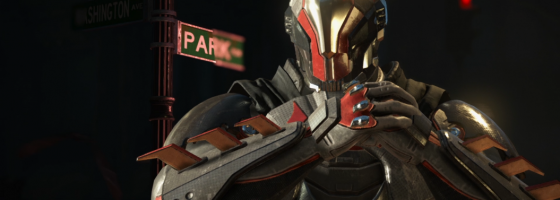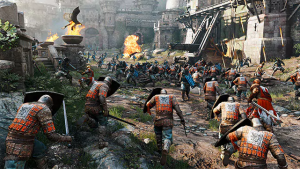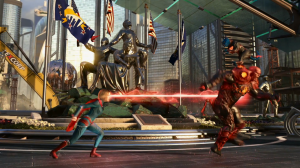We had a great chat on our live show recently about two of the latest games entering the competitive market: Injustice 2 and For Honor. While they both couldn’t be further from each other, they have one thing in common — Unpredictable character builds. In the past, we looked at why competitive players don’t like character changing items that get in the way of balance. However, the conversation posed an interesting question: Why does being unpredictable work in MOBA design?
Randomly Set:
Competitive play of a title requires a combination of a deep study into the mechanics and characters, and the hand/eye coordination to keep up. One area that has been thrown out for most competitive games is the ability for players to redefine characters with gear or other abilities. Street Fighter X Tekken was an attempt that failed with providing customization for the player.
Competitive design is about an even playing field, even if the characters are different. If I’m playing a Guile in Street Fighter 5, I know everything that Guile can do and will have to adjust accordingly. If a Guile could equip items that made their attacks faster or do more damage compared to other players, that would throw an even field out the window.
With that said, there are some games where that unpredictably works. In Mortal Kombat X, each character has three “styles” that determine move sets and combos. MOBAs are full of a variety of items that can be bought during a match to radically change a character’s utility.
In these games, competitive players have no problem with the fact that things can be different each time. MOBAs especially can lead to vastly different matches depending on the item builds that are being used. So the question is why does this work for certain games?
The Right Gear for the Job:
Looking at titles like MK X and the MOBA scene, the ability to use styles or items is different from having randomly generated/acquired buffs.
MK X’s styles are preset and both players know what the other one is going to use. There’s no way to tweak the styles further or do something that would go against it. In essence, the styles take one character and turn it into three possible characters to play.
In MOBAs, the items exist within the game itself and aren’t brought in by the player. What that means is every player has access to the same items at the same time. Item abilities are fixed and anything new that is added will be accessible to everyone who plays the game.
What these two games do with their unpredictable nature is make it available to all players. Even though two people can have two vastly different approaches, their options come from the same pool.
With everyone having the same pool to draw from, there is one obvious disadvantage of course. With a set range of items/options, these games still run into the problem of min/maxing seen in games like Hearthstone. A fixed limit of items makes it easy to find the best options.
In titles with randomized gear, there is no guarantee of getting a “perfect build” that can be copied by other players. And even if something does turn out to be perfect, the chance of it becoming widespread to cause trouble is very slim.
The question remains: What does this mean for the viability of Injustice 2 and For Honor in the competitive scene?
Heroic Honor:
Both For Honor and the upcoming Injustice 2 are making use of randomized items as a form of progression. For Honor at the moment has the added benefit of item stats tied to the character level. As we’ve talked about, any game that is focused on player skill has to balance abstracted elements carefully.
With For Honor, I think having gear and character levels tied together is going to cause trouble down the line. Without effective matchmaking, it’s going to be very easy for the player base to skew towards level advantages. In turn, this will make it difficult for someone brand new to join the game.
Netherealm hasn’t revealed yet what their plans for progression beyond just the loot drops. Given the combo focus, it’s going to be very interesting to see how the competitive scene takes to these items. I know that there is the option to turn them off, but that to me seems like a mistake.
Good itemization and unpredictability is what made LOL and DOTA 2 popular for competitive play. In my opinion, not balancing items seems like a cash out to have your cake and eat it too. This will divide the playerbase into the ones who use the items and the ones that don’t.
If you’re going to go in with randomized progression or items, then you have to balance it carefully. As I think about it more, randomized elements in competitive games feel less like sporting competitions and more like a street race.
The reason is that both competitors show up with vastly different cars, and it’s about the skill of the driver and the quality of the parts.
This goes back to a question I asked a long time ago: How much should progression impact success? Should someone with the best gear win over someone with more skill? As more games add abstracted progression to competitive play, these questions will need to be answered if a game wants any chance of being adopted by competitive players.
What do you think about these items in For Honor and Injustice 2? Do you think competitive gamers will pick these games up?



